The low-spirited bushes of the ageratum, destroyed by charming fluffy buds, are very often used in landscape design when creating flower compositions and drawings. Culture is loved by many gardeners not only for a great view, but also for a long period of flowering. Among other things, the saturated blue inflorescences of Ageratum are not flexible for a long time, decorating the flowerbed and glad the owners with his motley.
Content |
Ageratum: General Description of the Plant
This herbian culture belongs to the Astrov family, and in our country she fell out of hot Mexico, Peru and Central America. In these countries, Ageratum grows as a perennial and there are no less than 60 different species. Gardeners of Russia use a plant as an annual culture, having planted it every year. By the way, with Latin, the word "AGERATUM" is translated as "non-sharing". The flower nicknamed so not in vain, because in addition that he pleases us with abundant bloom since the beginning of the summer until late autumn, his cute boutons are not flexible and retain the entire brightness of the paint until the end of the flowering season. Many gardeners among themselves call the Ageratum is not otherwise like a "long-term".
While growing on open flower beds as annual, Ageratum is often grown in greenhouses as a perennial plant. The root system of this flower is very branched, and in those places where the main stem concerns the Earth, a lot of apparent roots appear on it. Ageratum bushes are very magnificent thanks to a large number of branches and shoots, and all green parts of the plant are covered with short swallows.
Ageratum leaves in shape resemble a rhombus or triangle. Culture buds are small, collected in cupid or collapid inflorescences. Button petals are painted in different colors of predominantly blue gamut, but there are also white, lilac and even purple shades. In addition to beautiful and lush flowering, Ageratum pleases its owners with a fragrant aroma, attracting bees and other pollinating insects. By the way, the buds on the bushes of agratoratum are oboe drops, and pollination often occurs crosswise.
Methods of reproduction of Ageratuma
Landing of Chernok Ageratuma
Previously, we noted that in places of contact of the stems of the ageratum with the soil on the branches are formed apparent roots, they are the basis for the reproduction of culture with cuttings. This method, in contrast to the seed reproduction, is always used in transplanting hybrid varieties, since only in this way the varietal signs of culture can be preserved. The hauling is a completely simple procedure.
- First you need to choose a suitable bush that will serve as a maternal plant.
- This bush is digging out of the ground in the season of flowering, as a rule, early autumn.
- The uterine plant is then transplanted into a rather warm, unproduced and unscrewing room to spring.
- For cuttings, it is preparing a soil consisting of soil and sand.
- From maternal cooking, prohibits prohibitations to the prepared land and are contained there at a temperature of about + 20 ° C.
- In favorable greenhouse conditions, the cuttings produce the roots quickly enough, and in early May, new plants can be transferred to the flower bed.
Reproduction of Ageratum Seeds
If you want to make a bright, motley, multicolored flowerbed and growing colors of one variety and shade for you it is not so important, you can plant ageratum seeds. First you need to prepare containers with Earth. The composition of the soil does not matter, most importantly, so that the soil was quite nutritious and easy.
- Fill out the appropriate bathing boxes and drink seeds, just do not stick them too deeply, it will be enough to pour out the grains with a thin layer of the earth.
- After about 2 weeks you will see the first shoots of your colors.
- Leave young sprouts in the greenhouse for another 3 weeks, so that they have grown and gratened.
- After that, seedlings can be picked. This procedure is desirable to conduct twice.
- The first time the sprouts transplanted into the total capacity, respecting the sufficient distance between the plants. After another 2-3 weeks, prepare individual cups with Earth and transplant the young bushes of Ageratum.
Do not forget the important feature of the plant - it does not like excessive humidity. This means that it is rare to water seedlings and only if necessary. Irrigate Ageratum only in the morning clock. If the containers with flowers are in a greenhouse or in a greenhouse, be sure to provide them with regular ventilation. So that young seedlings have come true in the open soil, it is advisable to temper the seedlings. Approximately 2 weeks before the agent of Ageratum on the flower las, remove the cups with sprouts to the street and leave in the shade.
Choosing a place for flowerbeds with Ameratum
Council for those who want to get a beautiful, bright lawn with lush blossoms: Sit down the ageratum necessarily on well-lit sunny places. In principle, such a plant can grow in a small shadension, but then his stems will stretch, and the buds will be somewhat less.
The soil for the ageratum is better to choose the light and quite fertile, for example, loam or sath. The acidity of the soil should be neutral, if you have an acidic soil on the site, it should be lime using wood ash, chalk or haired lime. Watch that water is not stood on a flowerbed with Ameratum, do not water the plants too often.
Rules for landing Ageratum and Culture Care
- Thirsty seedlings can be transferred to open land only after the end of all frosts. This time most often drops out for the last numbers of May or at the beginning of June. Drop for seedlings of a suitable depth, the distance between which will be at least 10 cm. Then transfer young bushes to the ground, blocking them about the same level to which they were discharged in the ramp. After about 2 months, expect the appearance of the first buds.
- Fortunately, Ageratum without problems makes a transplant to a new place. The key to the good suitability of colors is a sufficient amount of moisture, heat and sunlight. And so that the soil around bushes did not swing, it can be mulched peat. By the way, such a procedure will help protect the plant in the case of unexpected freezers, because then not the whole flower will die, but only the upper part of it.
- Thinking over the distance from a friend of the Ageratum bushes from each other, you need to take into account the grown variety. Tall variations are desirable to have no less than 20 cm at intervals, but low small bushes are better to plant approximately every 10 cm.
- Since in our country, Ageratum cultivates as an annual plant, it makes no sense to worry about its wintering. For several months, this fluffy miracle will delight you with your variety, and then simply will die and next year will have to plant flowers. Just before a new landing, it is important not to forget to get the same plants with the flower beds.
- As mentioned earlier, Ageratums poorly tolerate dampness and overvoltage, but they won't call him a drought-resistant culture. With a debt of the absence of rains, it is necessary to warm up to roast and arid weather, then they will delight you with lush and beautiful blossoms. It is impossible not to note the positive property of the plant as good portability of trim. To maintain the flower beds in a neat and tidy form, do not forget to regularly remove the shuthes and dried stalks from the bushes. And if you trim the culture completely, in a short time it will restore and will cover bright inflorescences again.
Features of Ameratum fertilizer
This garden plant speaks perfectly for feeding, but only mineral compositions are recommended as fertilizers. Organic fertilizers, especially fresh manure, act on the colors of destructive. It is necessary to feed the apertum three times during the season, and the first time minerals are desirable to bring in the ground just before the start of flowering. In addition to feeding, try to ensure the roots of air access, for this periodically loose the top layer of the soil around the bushes. Also, do not forget to pour weeds in a timely manner, which steal from the Earth the useful substances necessary by Ageratum.
Ageratum diseases and pests
Unfortunately, Ageratum is strongly susceptible to the formation of root rot, it is for this reason that the soil moisure is imposed on watering the plants. If your flowers were amazed by a similar attack, save them, unfortunately, will not succeed. So that the root rot is not transferred to neighboring bushes, the infected instances should be completely removed from the soil. However, if the soil for Ameratum was chosen correctly, if you avoid excessive irrigation and periodically loosen the land around the plants, the root rot is not terrible.
Ageratum can also attack a variety of pests: a web tick, nematodes, cucumber mosaic, whiteflies, etc. You can determine the presence of parasites or infections by changing the color of the leaves or see the pests with the naked eye. It is possible to get rid of such attention, if you immediately cut the affected areas of plants, and healthy shoots and leaves to handle insecticides.
Popular varieties of Ageratuma
- A variety of varieties of Ageratum is quite large, all varieties of plants differ from each other with dimensions of bushes, shape of leaves and buds, color of petals. Those who wish to decorate their garden with these motley colors, one can recommend such popular varieties: "Blausternchen" is a magnificent low plant, abundantly diluted with small blue-colored buds. Such ameratum refers to the early-flowing species and will decorate your flowerbed from the first week of June until October.
- Alba variety distinguishes tight inflorescences of white terry boutons. These low-grade bushes do not grow above 20 cm.
- "Blue Perfection" is another early grade that blooms beautiful lilac-blue inflorescences. Growing up to a height of 25-30 cm, the bush of this plant takes the shape of a dense ball created from the abundance of branches and shoots.
- By late varieties can be attributed to the Ageratum "BLAU KAPPE". Its semi-shaped bush reaches a height of about 30 cm. The branches covered with smallpoxes are decorated with small blue shades. Flowers are collected in inflorescences, the diameter of which is approximately 6 cm.
- Stems of the Ageratum "Little Dorrit" grow not higher than 20 cm, forming small dense bushes of a semi-shaped form. Sleeper blue buds are achieved in diameter 1.2 cm. This variety of culture is poorly tolerating drought and requires regular irrigation.
- Ageratum "Summer Snow" reaches 45 cm height, its snow-white fluffy buds are collected in shield inflorescences.
- It looks very attractive at the Fire Pink ameratum, whose petals are painted in rich-pink or lilac shades. The inflorescences of this variety are small, in diameter do not exceed 5 cm, and the bush itself grows not more than 30 cm in height.
Using Ageratum in Garden Decoration
The undoubted plus of culture can be considered its ability to grow intensively, in a short time forming a large number of shoots. Thanks to this feature, the aratum is convenient to use in a wide variety of flower arrangements, especially in curbraders and chapets. Dense bushes, densely destroyed by flowers, create the visibility of impermeable motley carpet.
Ameratum looks great in combination with Kleomo, Verbena, Cosmeya, Cynia. Bright blue buds are perfectly imitating water, so the ageratum can often be found in such an unusual element of garden design, like a floral stream.
By the way, you can decorate the ameratum not only the usual flowerbeds, but also gazebo, verandas and balconies. Low chopping plants grow perfectly even in small vases.
Photo of Ageratum:

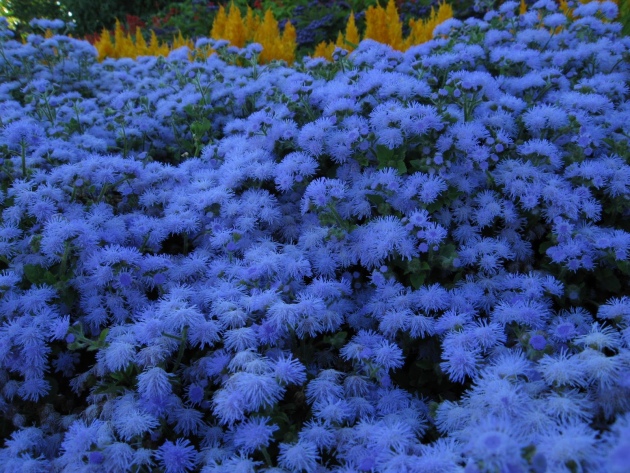
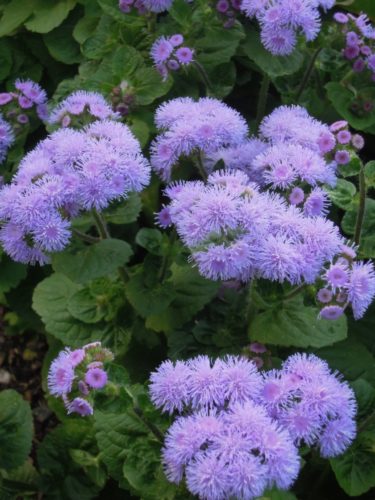
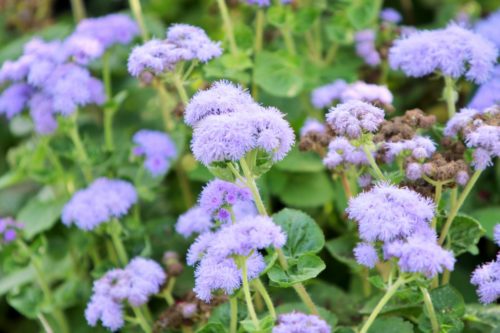
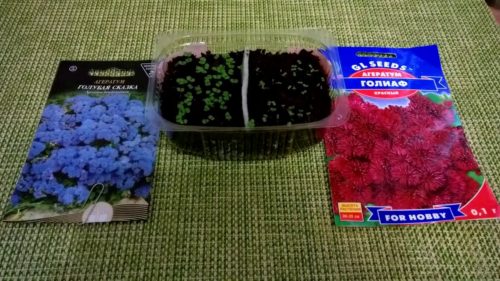
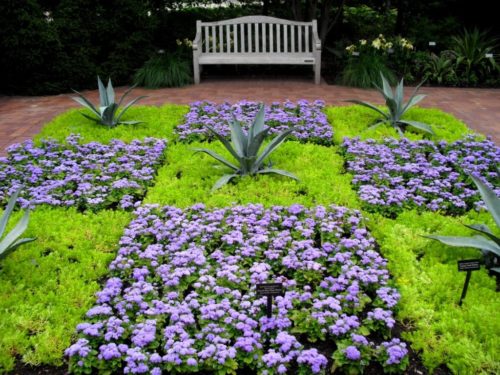
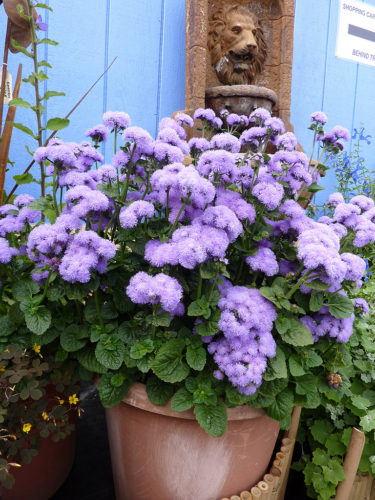
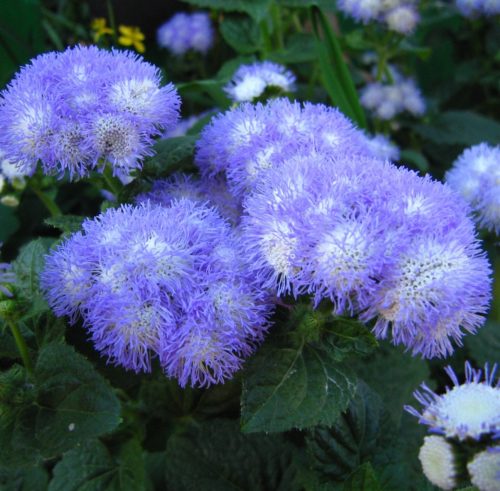
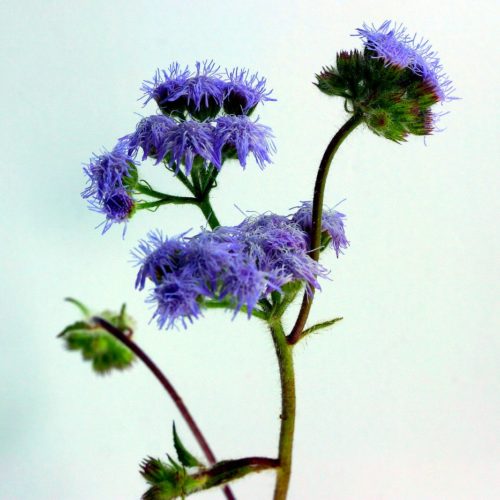
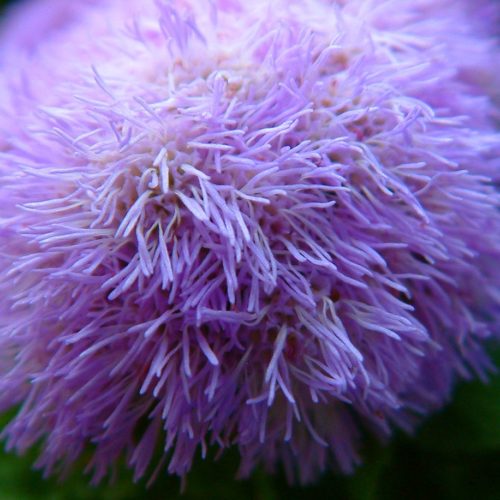

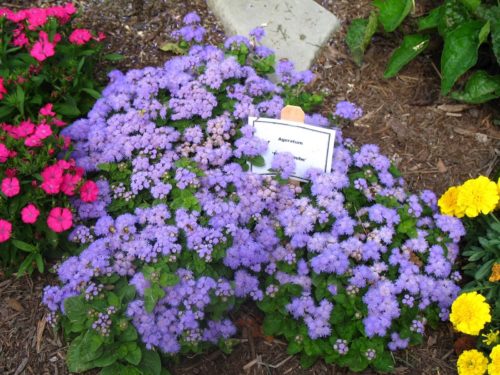
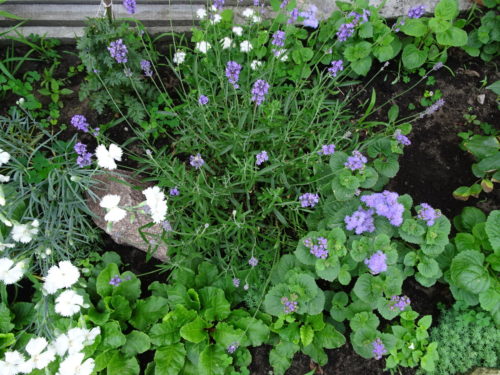
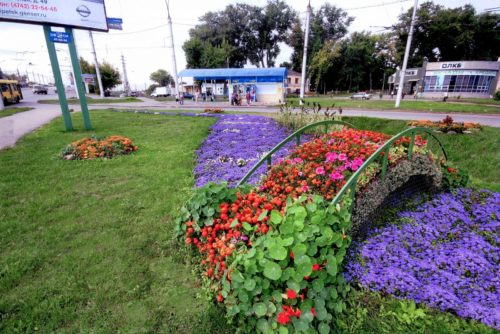
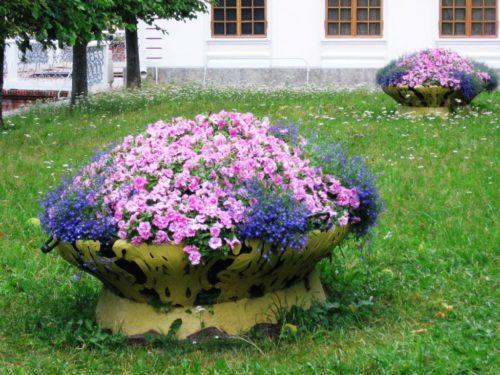












 Start a discussion ...
Start a discussion ...